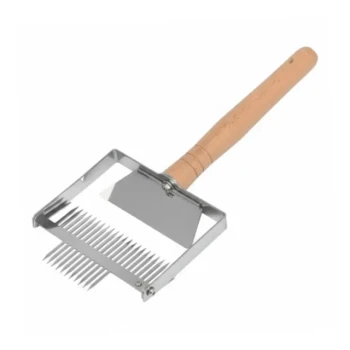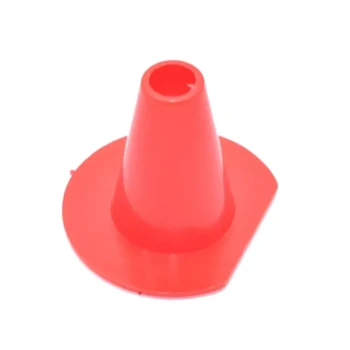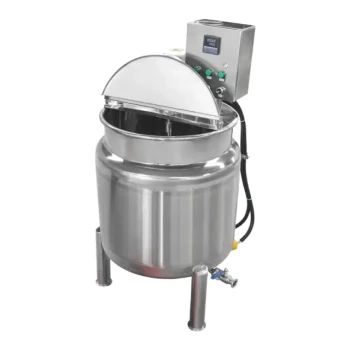In principle, a queen bee cannot get through a queen excluder. The entire device is engineered around a simple premise: the gaps are wide enough for smaller worker bees to pass through but too narrow for the larger thorax of a mature, mated queen. However, reality in the hive is often more complex, and there are specific situations where an excluder can fail.
A queen excluder is a management tool, not an infallible barrier. While it is designed to confine a laying queen based on her larger size, failures can occur due to damaged equipment, an undersized queen, or improper installation.
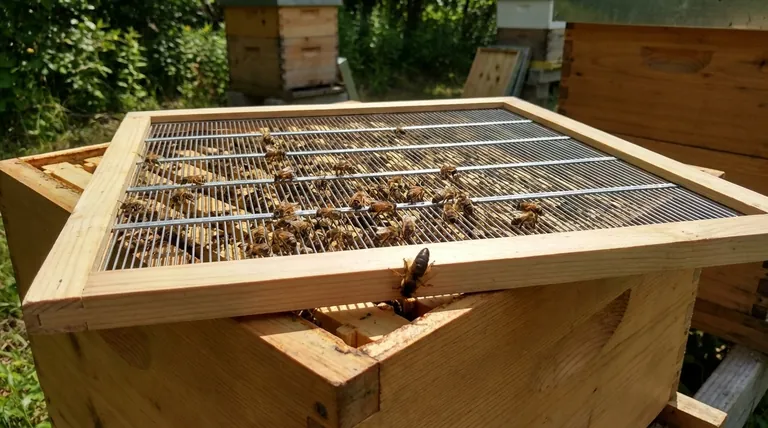
How a Queen Excluder is Designed to Work
To understand when an excluder might fail, we must first understand its intended function and design. It is a simple grid, made of metal or plastic, that creates a partition within the hive.
The Principle of Size Difference
A queen excluder works by exploiting a physical fact. The gaps in the grid are precisely measured, typically between 4.1 and 4.4 millimeters.
This spacing allows worker bees to move freely between the lower brood boxes and the upper honey supers. A healthy, mated queen, however, has a larger thorax and cannot pass through this barrier.
The Goal: A Brood-Free Honey Super
The primary reason beekeepers use an excluder is to confine the queen to the broodnest.
This prevents her from laying eggs in the honey supers. When it's time to harvest, the beekeeper can remove frames of pure honey without having to worry about damaging eggs, larvae, or pupae.
A Tool for Hive Management
An excluder also makes it much easier to locate the queen. If you need to requeen the hive or simply perform an inspection, placing the excluder a week prior ensures she is in the boxes below it where you see fresh brood.
When Theory Meets Reality: How a Queen Can Get Through
Despite its design, finding a queen and brood above an excluder is a known issue. This typically happens for one of a few clear reasons.
The Case of an Undersized Queen
A young, virgin queen on her mating flight is significantly smaller than a mature, laying queen. She can often slip through an excluder with ease. Similarly, a poorly mated or underdeveloped queen may never reach a size that prevents her passage.
The Problem of Damaged Equipment
This is the most common cause of failure. A bent wire on a metal excluder or a warped or cracked plastic excluder can create a gap just large enough for a queen to squeeze through. Equipment should be inspected for damage before every use.
Incorrect Installation
The excluder must sit perfectly flat and flush against the top of the hive body. If there are gaps between the boxes or the excluder is placed on a warped box, the queen can simply walk around the barrier instead of trying to go through it.
Understanding the Trade-offs
Using a queen excluder is a management decision with distinct advantages and disadvantages. It is not the right choice for every beekeeper or every situation.
Advantage: Simplified Honey Harvest
The clearest benefit is a clean harvest. By keeping brood out of the supers, you guarantee your honey frames contain only honey, which simplifies extraction significantly.
Disadvantage: Increased Swarm Risk
By artificially limiting the queen's laying area, the brood box can become "honey bound" or congested very quickly. This congestion is a primary trigger for swarming, as the colony feels it has run out of space.
Disadvantage: Potential for Reduced Honey Production
Some beekeepers refer to the device as a "honey excluder." The barrier can sometimes slow worker bee traffic into the supers, and the sharp edges of some metal excluders can damage their wings over time, potentially leading to a less efficient workforce.
Making the Right Choice for Your Goal
Your decision to use an excluder should be based on your specific beekeeping philosophy and goals.
- If your primary focus is maximizing honey yield with minimal effort: Use an excluder to ensure clean frames, but inspect it for damage and monitor the brood box for signs of congestion to prevent swarms.
- If your primary focus is a more "natural" hive expansion: Avoid the excluder, but be prepared for the queen to create a "brood chimney" up into the honey supers, requiring more careful frame selection during harvest.
- If your primary focus is locating the queen for requeening: Use the excluder as a temporary diagnostic tool to isolate her in a specific section of the hive, making your search much faster.
Ultimately, understanding the queen excluder as a specific tool with clear benefits and known limitations is the key to using it effectively in your apiary.
Summary Table:
| Scenario | Can the Queen Pass? | Key Reason |
|---|---|---|
| Normal Operation | No | Gap size (4.1-4.4mm) is too small for a mature queen's thorax. |
| Undersized/Virgin Queen | Yes | Smaller, unmated queens can slip through the gaps. |
| Damaged Equipment | Yes | Bent wires or warped plastic create larger openings. |
| Incorrect Installation | Yes | Gaps allow the queen to walk around the barrier. |
Maximize your honey yield and simplify hive management with durable, precision-engineered equipment from HONESTBEE.
As a commercial apiary or beekeeping equipment distributor, you need reliable tools that perform as expected. Our wholesale-focused operations provide high-quality queen excluders and other essential supplies designed to prevent failures and support your productivity.
Contact HONESTBEE today to discuss your wholesale needs and ensure your apiary runs smoothly.
Visual Guide
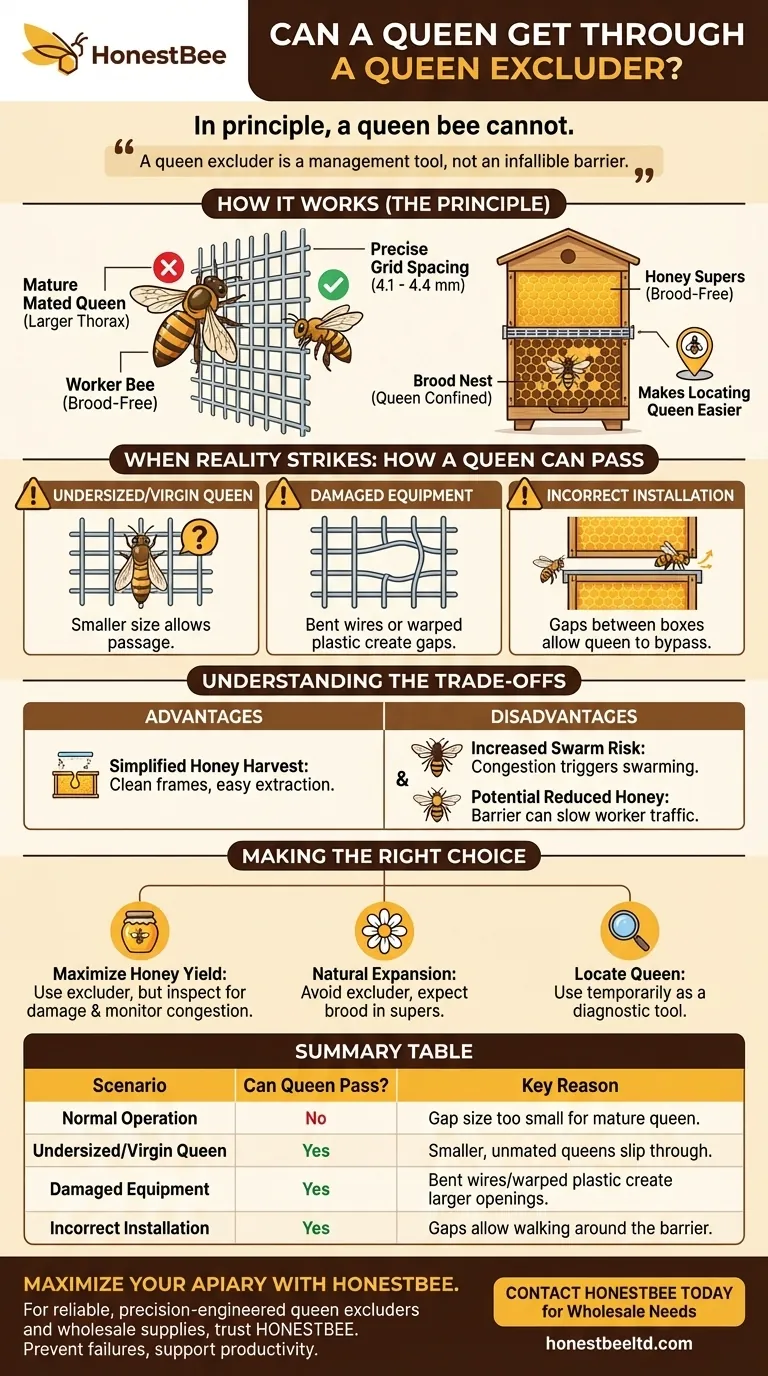
Related Products
- Premium Wood Framed Metal Wire Queen Bee Excluder
- Plastic Queen Bee Excluder for Bee Hive Wholesale
- High Performance Plastic Queen Excluder for Beekeeping and Apiary Management
- Professional Plastic Queen Excluder for Modern Beekeeping
- Metal Queen Bee Excluder for Beekeeping
People Also Ask
- When to put queen excluder on hive? Key Timing for Maximum Honey Production
- What is the primary function of a queen excluder? A Guide to Brood-Free Honey Harvesting
- Do I really need a queen excluder? A Guide to Maximizing Your Honey Harvest Efficiency
- What are the advantages of using a queen excluder? Maximize Honey Yield & Hive Control
- What considerations should a beekeeper take into account when deciding whether to use an excluder?







